
The Solar-Terrestrial Centre of Excellence (STCE) is a collaborative network of the Belgian Institute for Space Aeronomy, the Royal Observatory of Belgium and the Royal Meteorological Institute of Belgium.
 |
Published by the STCE - this issue : 9 May 2014. The Solar-Terrestrial Centre of Excellence (STCE) is a collaborative network of the Belgian Institute for Space Aeronomy, the Royal Observatory of Belgium and the Royal Meteorological Institute of Belgium. |
| Archive of the newsletters | Subscribe to this newsletter by mail |
On 15 April, a total lunar eclipse was visible from the America's and the Pacific. Some websites were buzzing about the "Blood Moon", as if werewolves and witches were going to team up and unleash a veritable apocalypse upon us. Fortunately, reality was a lot less dreadful and a lot more beautiful.
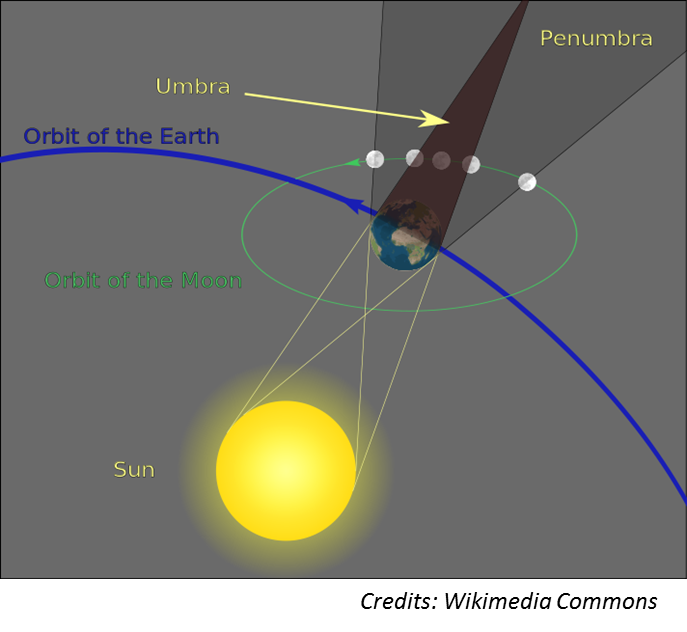
Total lunar eclipses occur when Sun, Earth and Moon (in that order) are on one line. The full moon then passes through the shadow cast by the Earth (sketch above). The dark shadow would normally make the moon completely invisible. However, Earth is surrounded by an atmosphere which refracts and scatters the light from the Sun that passes through. As the blue light is scattered more by the atmosphere than red, the resulting effect is a faint, reddish illumination of the moon's surface, even during the midst of totality. The effect is the same as the one that causes the red hues during sunset and sunrise here on Earth, and some bloggers eloquently wrote that the eclipsed moon gets illuminated by the sunsets and sunrises from all over the Earth.
Picture underneath is a screenshot from the livestream by Griffith Observatory (http://www.griffithobs.org/), taken near mid-totality (07:46UT).
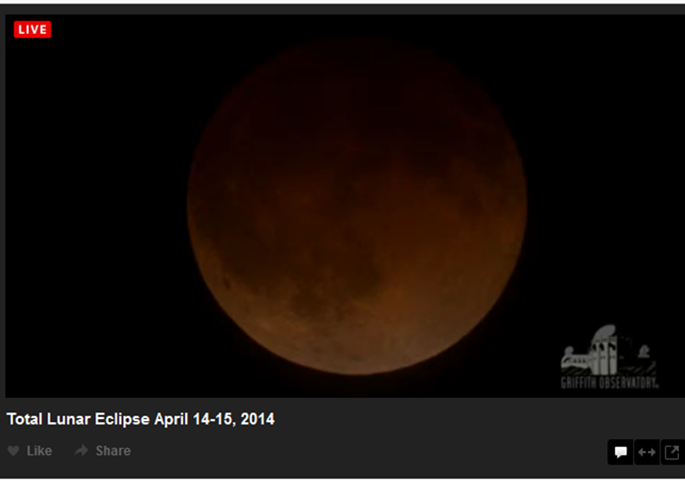
In 1921, André-Louis Danjon created a luminosity scale "L" to quantify the brightness of the eclipsed moon. "L" could vary between "0", meaning that the Moon was almost invisible, and "4" which meant that the eclipsed moon had a bright orange or copper red hue. From a study of descriptions of 70 lunar eclipses going back till 1823, he found that during the first two years after a solar minimum the eclipsed moon was rather dark and grayish. In subsequent years, the luminosity gradually increased during the solar cycle, with nothing particular happening around solar cycle maximum. Then, around the next minimum, the brightness of the eclipsed moon abruptly decreased back to very low L-values.
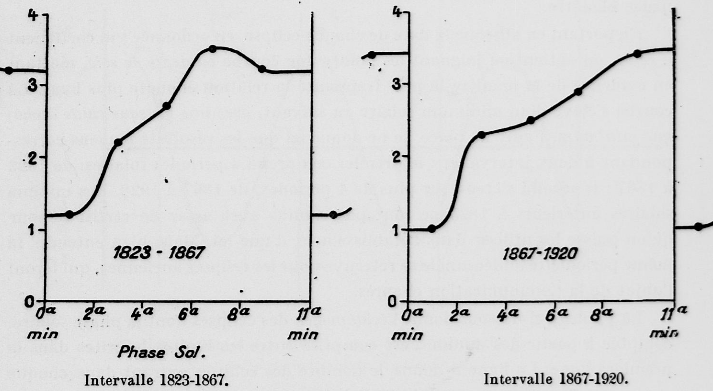
For this study, Danjon left out 3 eclipses from 1884 and 1885. Indeed, the eruption of the Krakatau in August 1883 caused very dark eclipses, whereas normally bright eclipses were expected (maximum of solar cycle 12). It highlights a weakness in the relationship discovered by Danjon, as the deduced L-values are influenced not only by strong volcanic eruptions, but can also be impacted by high altitude dust and aerosols (desert sand, wildfires, air pollution,...) and clouds. Also the depth of the immersion of the moon into the Earth's shadow has its influence.
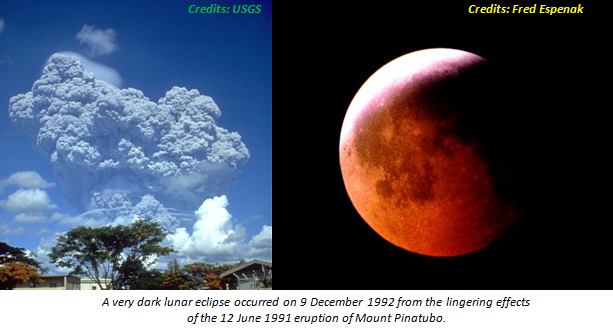
All these factors have an important impact and make it very difficult to validate Danjon's initial assertion. In fact, there's now general agreement that the brightness and color of lunar eclipses are dictated only by the contents and cloudiness of the mid and upper Earth atmosphere. The Sun is considered as a passive light source, with no measurable influence of the solar activity on the eclipse's color. So despite the 15 April eclipsed moon was reported to be bright (L=3), this is rather a hint at a relative clear Earth atmosphere at the time of the eclipse and not a result of some solar cycle effect. The next eclipse is on 8 October 2014, and it will be the second of 4 consecutive total lunar eclipses (a so-called "tetrad"). So, there will be plenty of opportunities for further evaluation of this "Blood Moon"!
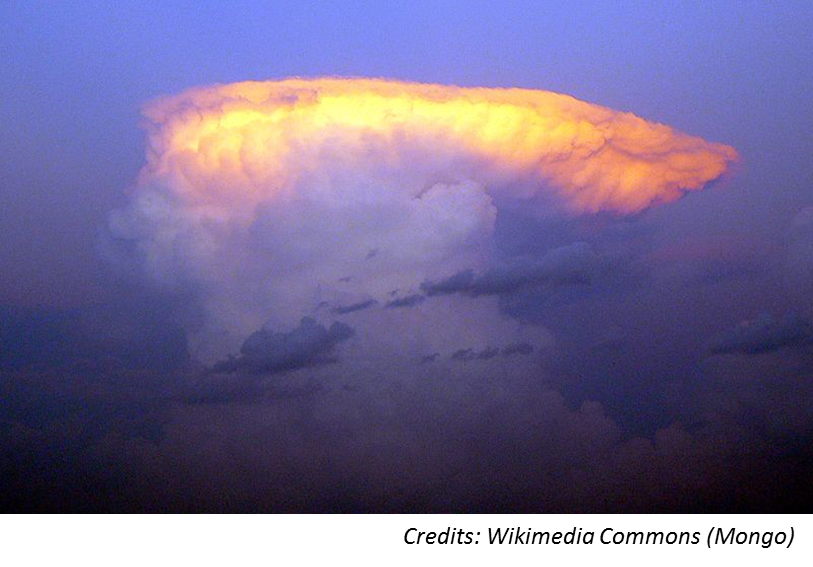
The Danjon paper (in French!) can be found at http://adsabs.harvard.edu/abs/1921LAstr..35..261D More recent discussions on the effects of clouds and air pollution can be found at Sky and Telescope (http://www.skyandtelescope.com/astronomy-news/does-air-pollution-alter-lunar-eclipses/ , 2011) and in this paper at http://pgia.ru/seminar/archive/2009/6_atmosphere%5Co_s_ugolnikov1__.pdf (2009).
The STCE organises a marathon workshop Physical Processes in Solar-Terrestrial Plasmas on May 20, 22 and 23. Yuriy Voitenko and Andrei Zhukov compiled an excellent program: 3 days of turbulence, waves and other mysterious phenomena. Besides the usual workshop presentations, Tom Chang (USA) and Robertus Erdelyi (UK) will introduce you to the physics of turbulences and energy transformations during their lecture.
Check the complete program : http://www.stce.be/annualmeeting/2014/plasmas.php
Doodle to win a free ticket for lunch - 100 procent probability to win : http://doodle.com/kwc9cze5eh74pg7i
Welcome !
The GOES X-ray flux background was mostly at B-class level. In the graph, the X-ray solar flux is plotted. The data points are averaged over an hour, this gives an idea of the background X-ray radiation. In total 19 B-class and 27 C-class flares were observed. All except 3 C-class flares occurred on May 2, 3 or 4, illustrating the increase in the X-ray flux. The largest flare was a C9.2 flare, peaking at 12:31 on 4 May. Catania sunspot group 36 (NOAA AR 2051) produced 10 of the C-class flares. The region developed quite quickly to a beta-gamma-delta group. Most of the other flares originated from NOAA ARs 2047, 2049, 2052 (Catania groups 33, 34, 37 resp) and 2053 (no Catania number).
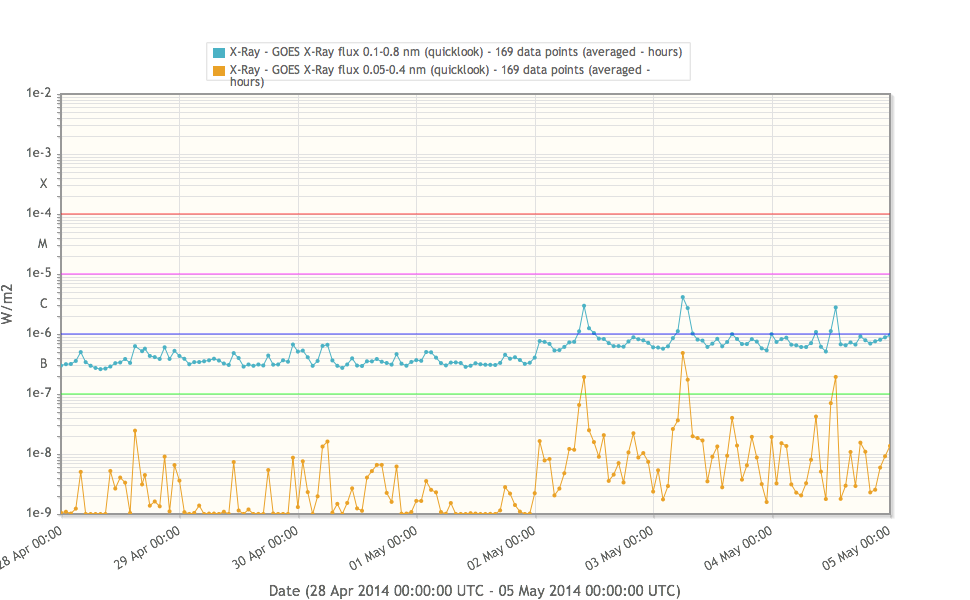
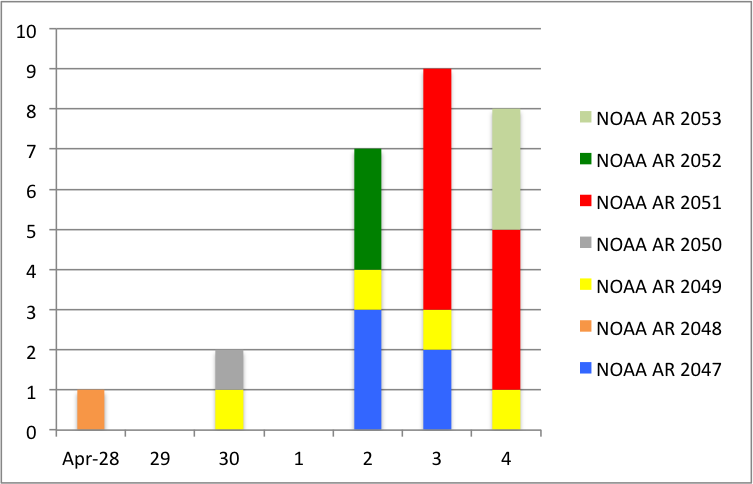
A few relatively faint CMEs were observed as well. A partial-halo CME was observed in LASCO C2 images with first measurement at 23:24 UT on 29 April, which was associated to the B9.1 flare (peaking at 22:54 UT) from Catania group 33.
Another CME erupted on 3 May with first signature in LASCO/C2 at 6:24 UT, which was propagating mostly to the west. On 4 May a stronger, but not geo-effective (west-ward) CME was observed in LASCO C2, it came into the FOV at 20:36 UT. It was followed by a partial halo CME, first visible in LASCO C2 at 23:48 UT and travelling mainly in the east direction.
Solar wind observations of ACE indicated the arrival of a transient around 19:30 UT on 29 April.
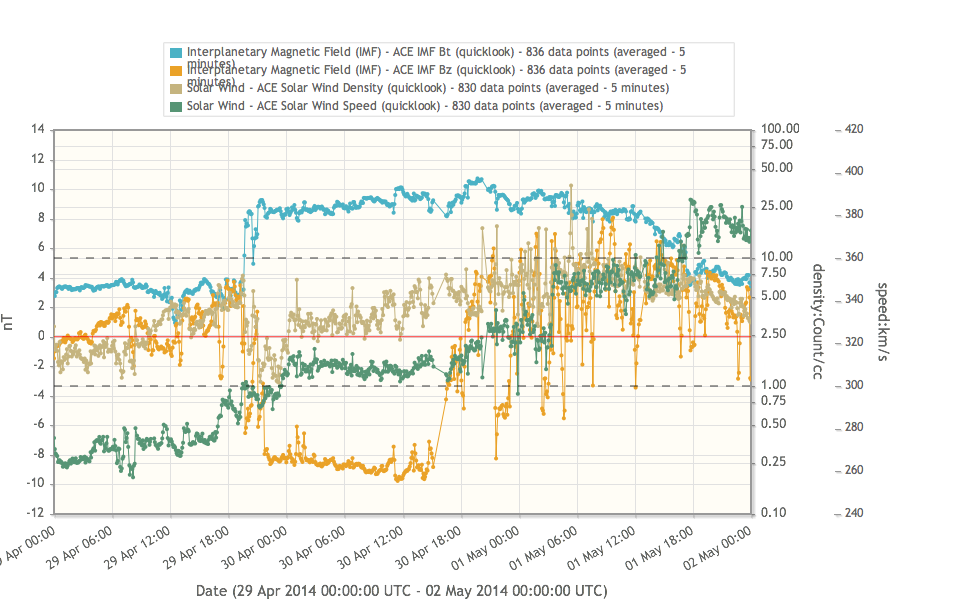
It is believed not to be related to the expected arrival of a coronal hole high speed stream, which has passed the central meridian on 24 April. The solar wind speed evolved from low to average, slightly below 400 km/s late 1 May. The magnitude of the interplanetary magnetic field (IMF) increased to maximally 11 nT, with a long time period of negative Bz, leading to local K index at Dourbes of K=4 late 30 April.
On 2 and 3 May solar wind conditions calmed down, till a shock arrival on 3 May around 16:50 UT.
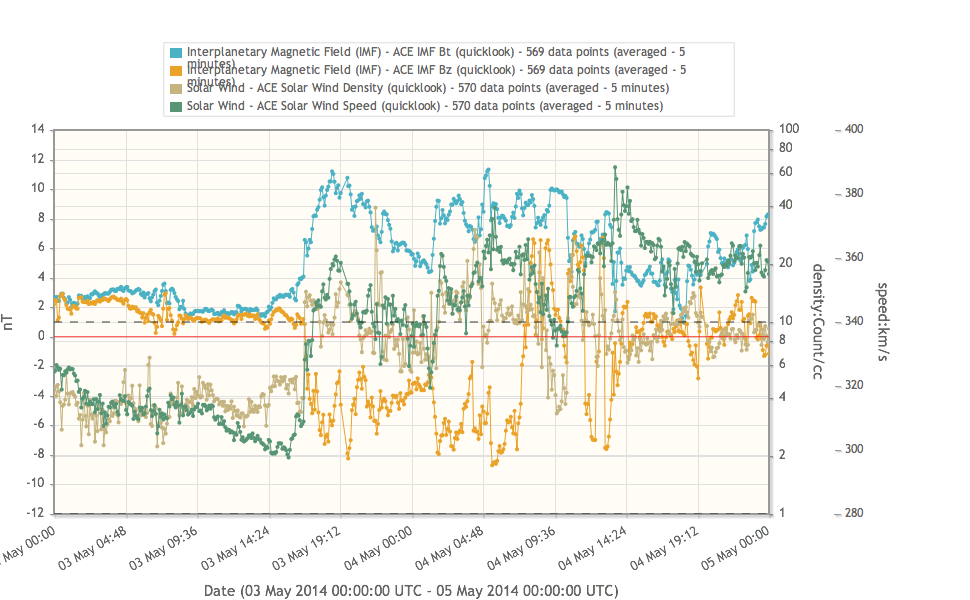
This shock is probably associated with the CME of 29 April. The solar wind speed increased to about 400 km/s and the total IMF fluctuated strongly between 2nT and 11 nT. The vertical component varied between -9 and 7 nT. Local and global geomagnetic conditions were active for at least one 3 hours time slot.
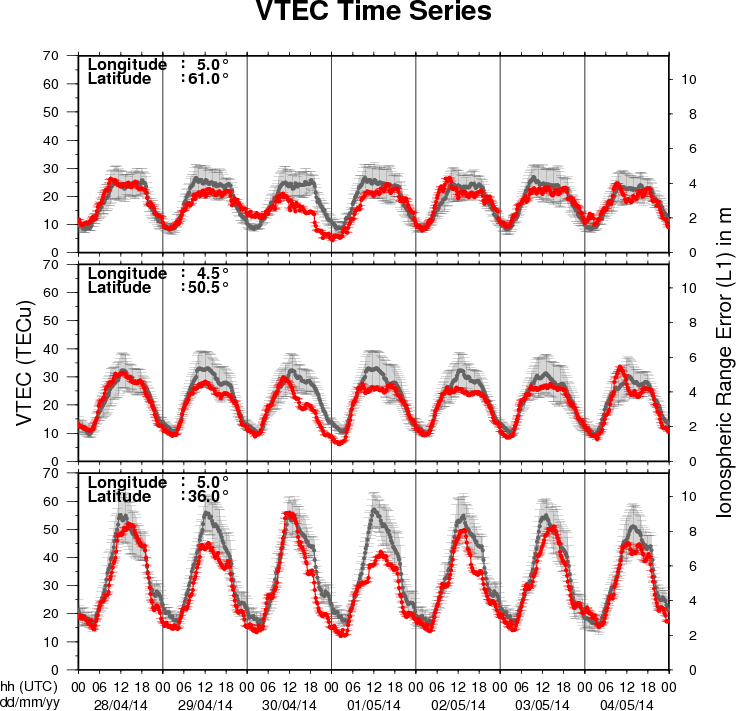
The figure shows the time evolution of the Vertical Total Electron Content (VTEC) (in red) during the last week at three locations:
a) in the northern part of Europe(N61°, 5°E)
b) above Brussels(N50.5°, 4.5°E)
c) in the southern part of Europe(N36°, 5°E)
This figure also shows (in grey) the normal ionospheric behaviour expected based on the median VTEC from the 15 previous days.
The VTEC is expressed in TECu (with TECu=10^16 electrons per square meter) and is directly related to the signal propagation delay due to the ionosphere (in figure: delay on GPS L1 frequency).
The Sun's radiation ionizes the Earth's upper atmosphere, the ionosphere, located from about 60km to 1000km above the Earth's surface.The ionization process in the ionosphere produces ions and free electrons. These electrons perturb the propagation of the GNSS (Global Navigation Satellite System) signals by inducing a so-called ionospheric delay.
See http://stce.be/newsletter/GNSS_final.pdf for some more explanations ; for detailed information, see http://gnss.be/ionosphere_tutorial.php
Solar flare activity fluctuated between very low and low during the week.
In order to view the activity of this week in more detail, we suggest going to the following website from which all the daily (normal and difference) movies can be accessed: http://proba2.oma.be/ssa.
This page also lists the recorded flaring events.
A weekly overview movie can be found here: http://proba2.oma.be/swap/data/mpg/movies/WeeklyReportMovies/WR214_Apr28_May04/weekly_movie_2014_04_28.mp4 (SWAP week 214).
Details about some of this week’s events can be found further below.
A solar eclipse occurred in the early morning.
The PROBA2 orbit is such that it ‘allows’ for several eclipse configurations to occur in consecutive orbits. At this particular occasion, four eclipses could be observed.
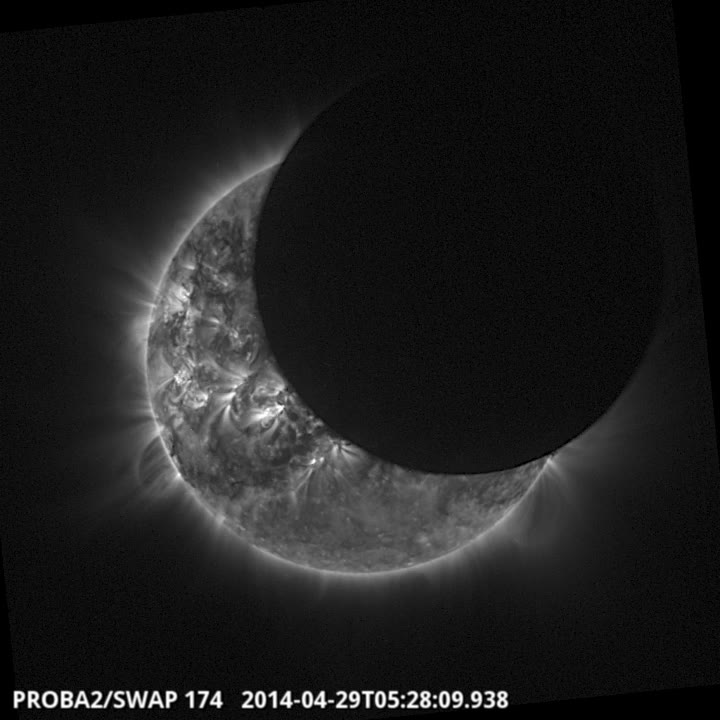
Start : 2014-06-10 - End : 2014-06-11
The STCE workshop 'Inter-Calibration and Degradation of EUV
Instruments' aims at understanding the differences observed between
the various instruments observing in the SXR-EUV range and at
analyzing the ageing effects that affect their results. It targets
imagers as well as spectrometers and photometers.
The workshop will be followed by two days of working sessions
(June 12-13) organized by the Solar EUV Irradiance Working Group
(also supported by the STCE). These working sessions are in the
continuity of similar events organized in 2011, 2012 and 2013, but
they are open to new participants and you are welcome to join if
you are interested.
Website:
http://www.stce.be/euvworkshop2014/
Start : 2014-06-19 - End : 2014-06-20
During the summer of 2014 DTU Space will host the 3rd Swarm
Science Meeting, sponsored by the European Space Agency, ESA
. This meeting will take place at
the IDA Conference Centre in Copenhagen on June 19th to 20th 2014
and is open to the science community at large.
Website:
http://congrexprojects.com/2014-events/Swarm/home
http://www.spaceweather.eu/en/repository/show?id=492
http://www.spaceweather.eu/en/repository/show?id=497
http://www.spaceweather.eu/en/repository/show?id=498
Presentation given at the STCE Workshop Science and science operations of the PROBA satellite fleet on the perspective of Belspo on the PROBA series and the Belgian involvement in the European space programmes.
http://www.spaceweather.eu/en/repository/show?id=501
Presentation given at the STCE Workshop Science and science operations of the PROBA satellite fleet on the perspective of QinetiQ Space on the PROBA series.
http://www.spaceweather.eu/en/repository/show?id=502
Presentation given at the STCE Workshop Science and science operations of the PROBA satellite fleet on Proba-1 and Proba-V as part of the ESA's Earth Observation Programme.
http://www.spaceweather.eu/en/repository/show?id=503
Presentation given at the STCE Workshop Science and science operations of the PROBA satellite fleet about the PROBA2 science operations.
http://www.spaceweather.eu/en/repository/show?id=504
Presentation given at the STCE Workshop Science and science operations of the PROBA satellite fleet on the new operational mission PROBA-V, an earth observing satellite.
http://www.spaceweather.eu/en/repository/show?id=505
Presentation given at the STCE Workshop Science and science operations of the PROBA satellite fleet about the operations at the PROBA satellites "nursery".
http://www.spaceweather.eu/en/repository/show?id=506
Presentation given at the STCE Workshop Science and science operations of the PROBA satellite fleet on a PROBA-V experimental moon calibration method.
http://www.spaceweather.eu/en/repository/show?id=507
Presentation given at the STCE Workshop Science and science operations of the PROBA satellite fleet on the instrument aspects, operations and science of the Energetic Particle Telescope (EPT) onboard of PROBA-V.
http://www.spaceweather.eu/en/repository/show?id=508
Presentation given at the STCE Workshop Science and science operations of the PROBA satellite fleet on the challenges and successes of the coronal images SWAP onboard of PROBA2.
http://www.spaceweather.eu/en/repository/show?id=509
Presentation given at the STCE Workshop Science and science operations of the PROBA satellite fleet on the Large-Yield Radiometer (LYRA) onboard of PROBA2. LYRA measures the solar irradiance in 4 bandpasses with 3 types of detectors.
http://www.spaceweather.eu/en/repository/show?id=510
Presentation given at the STCE Workshop Science and science operations of the PROBA satellite fleet on the results and operations of the micro-cameras onboard of PROBA-1 and PROBA2.
http://www.spaceweather.eu/en/repository/show?id=511
Presentation given at the STCE Workshop Science and science operations of the PROBA satellite fleet on the impacts of the Low Earth Orbit radiation environment on PROBA satellites.
http://www.spaceweather.eu/en/repository/show?id=512
Presentation given at the STCE Workshop Science and science operations of the PROBA satellite fleet on ALTIUS, an Atmospheric Limb Tracker for Investigation of the Upcoming Stratosphere.
http://www.spaceweather.eu/en/repository/show?id=513
Presentation given at the STCE Workshop Science and science operations of the PROBA satellite fleet on the future PROBA-3 satellite. PROBA-3 consists of 2 spacecraft flying in formation. The inner-satellite acts as the occulter for a chronograph observing the solar atmosphere.
http://www.spaceweather.eu/en/repository/show?id=514
Presentation given at the STCE Workshop Science and science operations of the PROBA satellite fleet on the study of a Passive Companion Micro-Satellite to the SAOCOM-1B Satellite of Argentina, for bistatic and interferometric SAR applications.
http://www.spaceweather.eu/en/repository/show?id=515
Presentation given at the STCE Workshop Tomography and 3D reconstruction in space science, April 2014 on 3D CME reconstruction: constraints, methods and an application.
http://www.spaceweather.eu/en/repository/show?id=516
Presentation given at the workshop Tomography and 3D reconstruction in space science, April 2014 on temperature and density reconstruction of coronal structures. The technique which is based on Python is applied to polar plumes observed in SDO/AIA images.
http://www.spaceweather.eu/en/repository/show?id=517
Presentation given at the workshop Tomography and 3D reconstruction in space science, April 2014 about the work performed at Vision Lab ASTRA: All Scale Tomographic Reconstruction Antwerp.
http://www.spaceweather.eu/en/repository/show?id=518
Presentation given at the workshop Tomography and 3D reconstruction in space science, April 2014 on how the 2D energy spectra of electron above the auroral arcs are estimated. The technique uses optical ground-based observations done with ALIS, Auroral Large imaging System.
http://www.spaceweather.eu/en/repository/show?id=519
Raising awareness and get people outside the scientific community involved in space weather becomes more and more an issue. To cross the borders of our science project eHEROES, we came up with a tide communication plan that answers the questions: what, to whom, why, when, how, by whom? The key is to link the audience and your message in a correct way. Both formal and informal education are on our tool list.
This is an invited poster presented at EGU, 2014 in the session
Raising and maintaining awareness of our local space weather: education and public outreach.
eHEROES, Environment for Human Exploration and RObotic Experimentation in Space is an FP7 project (n° 284461, www.eheroes.eu).
http://www.spaceweather.eu/en/repository/show?id=520